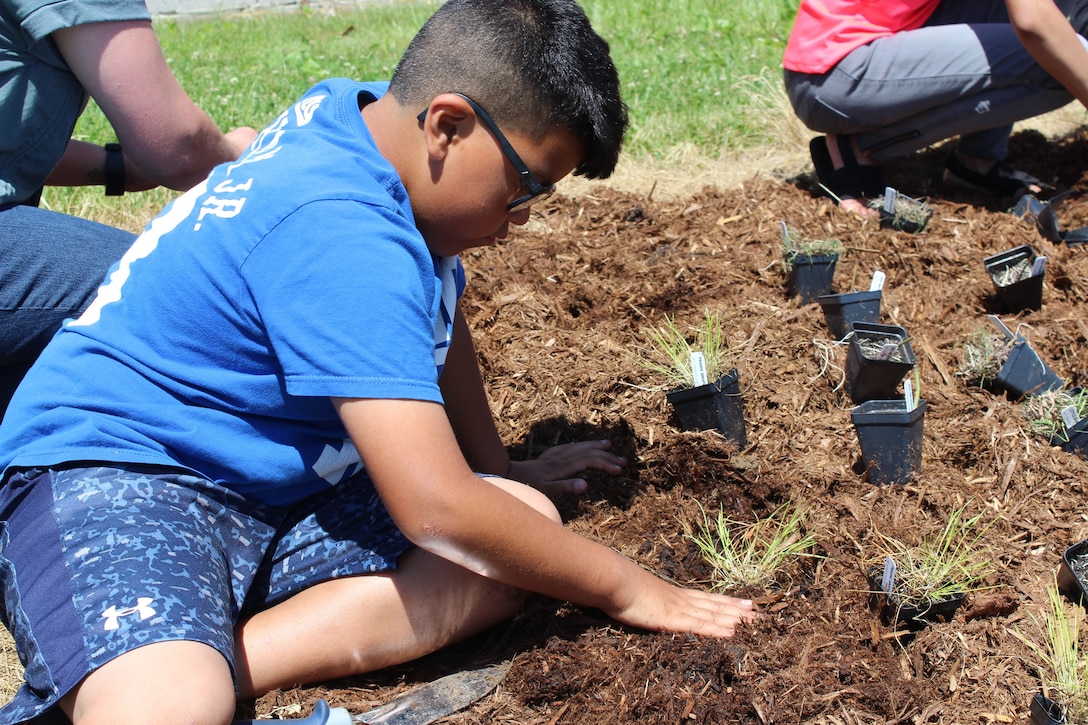For gardening dates for vegetables in Indiana check out the resource:
How to Manage Emergencies
The article below is very helpful in knowing how we can better react to emergency situations including safety and health emergencies.
What do you do?
Well, that depends. Every one of us is at risk for these kinds of unexpected intrusions into our day-to-day lives. What you do about it depends on whether or not you’re prepared – not just physically, but also mentally.
In any situation, some things are likely to be out of your control: the size of the fire; who’s flying the plane; what’s wrong with the woman. Some things, however, are up to you. Being aware of how you might react can go a long way toward making a bad situation better.
Know thyself
In a crisis, your brain is going to want to make decisions, and not always the best ones. The good news is there are steps you can take to be a better decision-maker in emergencies. There is science behind the way people react to stressful situations, and we can use it to our advantage.
Science tells us that people behave in high stress incidents in certain ways. What you do will be dependent in large part on what your stress level is. If your heart rate soars above about 175 beats per minute, you’re more likely to go into shutdown mode and not be able to think clearly or act. A technique called “combat breathing” (inhale through your nose, hold, exhale through your mouth, hold) has been shown to reduce your heart rate by 20-30 beats per minute. Controlling your emotion and stress level will help as you go through the decision-making process.
During the decision-making process, your mind will most likely move through three stages:
- Deliberation
- Decisive action
Knowing these stages – and preparing for them ahead of time – can help you recognize and deal with what’s going on around you more effectively.
Denial: This is not happening
Have you ever heard gunfire in your neighborhood and blamed it on a firecracker? That’s denial. And it’s perfectly normal. We don’t want to believe bad things are happening. We don’t want to panic or look silly.
In emergencies, we often look to people around us for cues about what we should do. (Is everyone else running and screaming, or are they sitting quietly in their chairs? Are others stopping to help?) This is known as social proof. Social proof is a psychological phenomenon that happens whenever people aren’t sure what to do. We assume others around us know more about the situation, and so we do what they do, whether it’s the right thing or not.
We also know that a person is less likely to take responsibility when others are present. We assume that other people are responsible for taking action, or that they’ve already done so. This is called diffusion of responsibility, and it means you’re actually more likely to get help when you’re with a single person than when you’re in a large group of people.
We are all susceptible to believing these things, which make it easy to deny that 1) an emergency is really happening, or 2) we need to do something about it.
Deliberation: What are my options?
Once you’ve recognized the emergency, you’ll begin to consider your options. If you’re smart, you’ve already started this process before the emergency happens. Maybe you participated in a fire drill at work, or you counted exactly how many rows there are between you and the emergency exit on the plane, or you took a first aid class in your community. The more you’ve prepared, the more options you’ll have to work with.
One thing you can do to prepare everywhere you go is called scripting. All it requires is a little bit of imagination. Pay attention to your surroundings and see what’s available to you. Check for exits (and consider windows as possible exits). Be nosy, especially when it concerns your safety. Then run different scenarios in your head. Where would you go if you had to get out? Who would you call if you needed help? What will you do if there’s a fire? A robbery? A bomb threat? Think about the possibilities ahead of time.
Everybody hates the idea that we practice for emergency events. Fire drills… ugh. But it’s practice, and practice helps you understand what to do or how to react when you don’t have a lot of time. Not only can practice save your life, but if you know how to save yourself, emergency responders on the scene can use their time and effort to save others. You’re one less person who needs saving, and that saves lives.
Decisive action: It’s go time!
You’ve acknowledged there’s a problem. You’ve considered your options. The next step is to take decisive action. With all the information you have, what are you going to do next?
Before you take action:
- Calm yourself
- Shift your emotion. If you do get mad, use that anger as energy.
- Stay fit – if you’re more fit, you’re likely to be more rational
Now is the time to put your plans into motion. Go to the exit, call for help, take cover, give CPR… whatever you’ve decided to do.
In most crisis situations, there is no definite right or wrong. There is no perfect way – only the best we can do. The most important thing is to do something. In almost every case, an imperfect plan is better than no plan, and action is better than inaction.
Remember, if you depend on everyone else to take care of you, you’re leaving the most important person out. Don’t wait to make a plan. Know yourself, know your situation, and be prepared to save your own life.
Various Food Labels
Food Labels Explained
There are many different food labels that contain information about how food was grown or processed. However, some labels can be misleading. Below are examples of labels to look for and ask questions about at the store or market where you see them.
CERTIFIED LABELS
ORGANIC
 USDA’s National Organic Program regulates labeling requirements for organic agricultural products. Organic labels can be found on produce, dairy, meat, processed foods, condiments and beverages. Food products labeled “organic” must contain at least 95% organic ingredients with no synthetic growth hormones, antibiotics, pesticides, biotechnology, synthetic ingredients or irradiation used in production or processing. Products that contain at least 70 percent organic ingredients and are produced without synthetic methods are labeled “made with organic ingredients,” though they cannot use the USDA organic seal on their packaging.
USDA’s National Organic Program regulates labeling requirements for organic agricultural products. Organic labels can be found on produce, dairy, meat, processed foods, condiments and beverages. Food products labeled “organic” must contain at least 95% organic ingredients with no synthetic growth hormones, antibiotics, pesticides, biotechnology, synthetic ingredients or irradiation used in production or processing. Products that contain at least 70 percent organic ingredients and are produced without synthetic methods are labeled “made with organic ingredients,” though they cannot use the USDA organic seal on their packaging.
CERTIFIED NATURALLY GROWN
 This label denotes the food was grown using the same standards as those for organic, but not on a farm actually certified by the National Organic Program of the USDA. Some farmers have criticized the cost and process they need to go through to participate in the USDA’s organic program, so this is an alternative, non-governmental certification system where other farmers act as inspectors in a program administered by a non-profit organization called Certified Naturally Grown. “Natural” is a term present on a lot on food products (some of which you’d hardly call natural at all), so look closely at the label. The Certified Naturally Grown label indicates that someone is certifying that it is indeed natural, rather than just using the word “Natural” for marketing purposes.
This label denotes the food was grown using the same standards as those for organic, but not on a farm actually certified by the National Organic Program of the USDA. Some farmers have criticized the cost and process they need to go through to participate in the USDA’s organic program, so this is an alternative, non-governmental certification system where other farmers act as inspectors in a program administered by a non-profit organization called Certified Naturally Grown. “Natural” is a term present on a lot on food products (some of which you’d hardly call natural at all), so look closely at the label. The Certified Naturally Grown label indicates that someone is certifying that it is indeed natural, rather than just using the word “Natural” for marketing purposes.
FAIR TRADE
 Fair trade standards are enforced by the Fairtrade Labeling Organizations International (FLO) (in the U.S. by Fair Trade USA). Fair trade products must be produced in accordance with the following guidelines: Workers must receive fair wages, safe and equitable working conditions and the right to join trade unions; child or forced labor is completely prohibited. Crops must also be grown, produced and processed in a manner that supports social development, economic development and environmental development. Fair trade standards have been established for coffee, tea, cocoa, honey, bananas, juices, cotton, flowers, gold, rice, spices and herbs, sports balls, wine, composite products, fresh fruit and sugar.
Fair trade standards are enforced by the Fairtrade Labeling Organizations International (FLO) (in the U.S. by Fair Trade USA). Fair trade products must be produced in accordance with the following guidelines: Workers must receive fair wages, safe and equitable working conditions and the right to join trade unions; child or forced labor is completely prohibited. Crops must also be grown, produced and processed in a manner that supports social development, economic development and environmental development. Fair trade standards have been established for coffee, tea, cocoa, honey, bananas, juices, cotton, flowers, gold, rice, spices and herbs, sports balls, wine, composite products, fresh fruit and sugar.
For additional labels and information see:
Free Teen Hip Hop Dance Instruction – Library
Date/Time
Date(s) – 03/30/2019
2:00 pm – 3:00 pm
 Teens are invited to try Hip Hop dance. They can wear comfortable clothing to learn dance moves from professional instructors from Iibada Dance Company.
Teens are invited to try Hip Hop dance. They can wear comfortable clothing to learn dance moves from professional instructors from Iibada Dance Company.
https://indywithkids.com/events/teen-hip-hop-dance-eagle-library-branch/
When Change is Hard

These proven tools can help you feel stronger and more hopeful. Check out each page for specific, easy-to-follow tips.
Making a change is not easy. In fact, 60 percent of people who achieve their New Year’s resolutions flop once-or more-before succeeding.
But you can pump up your healthy habits. And the more you stick with a new behavior, the easier it gets. That’s because repetition actually can build pathways in your brain.
If you’re having trouble, consider these tools for sticking with change.
Boost Your Motivation
Everyone has times when their motivation sags. Here are some tips to boost yours:
- Remember your why. What made you try this wellness tool? Was it because you wanted to be more focused at work? Less grouchy to your spouse? Less winded at the gym? Or maybe it was just because you deserve to feel good. Whatever your reasons, keep a list to inspire you.
- Make a change. If you’ve tried your chosen tool for a while and aren’t feeling better, try another. Remember, not all of the 10 Tools are right for everyone. Also consider shifting the way you use a tool to avoid boredom. For example, if you’ve chosen to help others, instead of checking on your neighbor this week, try donating to charity.
- Get support. If appropriate, join a group or work with a friend. You also can ask those around you to support your change. If you’re trying to stay positive, you might ask your kids to tell you something great about their day.
- Congratulate yourself. Success breeds success, so acknowledge yourself for any steps forward. Little rewards sometimes also work well.
Resisting Temptation
At times, you may find yourself on the verge of returning to unhealthy behaviors. Tips for those times include:
- Be prepared. Some temptations can be avoided altogether with a little planning. You can pack healthy snacks to resist junk food. You can record your late-night TV show to avoid losing sleep.
- Wait it out. If you’re feeling an unhealthy urge, remind yourself that it will pass. Most urges fade pretty quickly. If yours is stubborn, try distracting yourself with something fun.
- Ask yourself about yourself. What will make you feel better about yourself later, sticking with your wellness change or dropping it?
Dealing with Setbacks
Failing is not such a big problem. How you deal with failure is often what really matters.
- Don’t give up. When you break your plan, try not to assume all is lost. It would be a shame to give up entirely just because you slipped for a few days-or even a few weeks.
- Don’t overly criticize yourself. Scolding makes you feel bad about yourself, and bad does not promote success. Instead, imagine what you’d say to a friend if she had failed.
- Think about what went wrong. Then start looking for solutions. Were you too tired at the end of the day? Try moving your activity to the morning instead. Did you feel like you didn’t have time? You might switch to one of the wellness tools that take almost no time, like staying positive. Did you put other people’s needs before yours too often? Remember that if you don’t take care of yourself, you may wind up too burnt out to help anyone else.
- http://www.mentalhealthamerica.net/when-change-hard
Come Today: Poison Control Center Lunch and Learn

Openings Still Available! No need for RSVP!
Come bring your lunch and learn with us!
- Wednesday, March 27, 2019
- 12:00-1:00 PM
- Atherton Union 326
- Door Prize Given

We are fortunate to have presenter, Adam G. Overberg, PharmD, BCPS, Director of the Indiana Poison Center. Dr. Overberg will address poison prevention, education, public health and acute management. The Indiana Poison Center (IPC) is an independent, nonprofit agency providing coverage and services for the entire state of Indiana. It serves as both an emergency telephone service and an information resource center, with services available to the general public and healthcare professionals 24 hours a day, 365 days a year. Most poisonings are unintentional, which means they can be prevented. Educating yourself and your family about poison safety is one step towards preventing a poisoning.
http://indianapoison.trendyminds.com/
Eagle Creek Dino Run
For an off-road experience near home check out the upcoming D.IN.O. run!

Vegan Stuffed Baked Potatoes
Stuffed Baked Potatoes

2 large Russet or Yukon Gold potatoes, about 8-ounce each
⅓ cup non-dairy milk, plain, unsweetened
4 Tbsp oil-free hummus
1 cup cooked vegetables, chopped (onions, broccoli, cauliflower, etc.)
½ tsp hot sauce
½ tsp pepper and salt (optional)
Preheat oven to 375 degrees F. Prepare potatoes for baking by washing well, and poking several times with a fork or knife for steam to escape during baking.
2 Bake for approximately one hour, or until fork tender. Remove from oven and allow to rest until cool enough to touch. Slice potatoes lengthwise.
3 Scoop insides of potatoes into a bowl, being careful not to tear the skins. Leave a small rim of potato intact for support.
4 Lay the hollowed out potato shells on a baking sheet.
5 Mash the potato flesh in a bowl along with the remaining ingredients, combining thoroughly. Spoon mixture back into the potato shells evenly until each half is rounded and almost overflowing. Pop them back into the oven, and bake until heated all the way through, approximately 15 minutes. Remove from oven, and serve immediately.
Juice, A Healthy Choice?

What’s In Your Glass?
Who doesn’t enjoy a tall, cool glass of juice? The color is vibrant, the taste sweet, and it’s good for you, too. Not so fast, say some dietitians. Although the best kinds of juice give you some nutrients, the worst are hardly better than liquid candy. You just need to know the difference. For a comparison and suggestions go to:
CDC Quick Vaccination Guide for International Travel

Before you go, be sure to check the guide linked below for required and suggested immunizations you may need for travel. With some weeks left before the summer break, you can be forward-thinking and take care of these needs in a timely way. https://wwwnc.cdc.gov/travel/destinations/list

